Nashville guitar heroes Vince Gill and legendary pedal-steeler Paul Franklin talk about the tones and tools on their new album, Sweet Memories: The Music of Ray Price & The Cherokee Cowboys. Prepare for rare Martins and Paul’s signature pedal and amp.
A decade ago, Vince Gill and Paul Franklin recorded Bakersfield, a tribute to the raw-boned country music that came out of the rough-and-rowdy clubs patronized by oil-field hands and agricultural workers in the ’50s and early ’60s—packed with songs by Merle Haggard and Buck Owens. And we visited with them for a Rig Rundown then.
Now, just for the good times, these two legends of modern country music—the real deal kind—have recorded Sweet Memories: The Music of Ray Price & The Cherokee Cowboys. Price was known for his warm, baritone approach to melody, which is a perfect springboard for Gill’s and Franklin’s nuanced approaches to their own instruments.
If you don’t know Gill’s work, it’s about time you got informed. He has won more CMA Awards than any performer in history, plus 21 Grammys. He’s also sold more than 21-million albums and is currently in the Eagles, where his sweet tenor voice and skill with harmonies makes him a perfect match. (You can also hear Gill talk about his work on Cory Wong’s Wong Notes podcast, from November 2020.)
Although Franklin spends his time over the pedal steel, this artist is no slouch. He’s played on more than 500 albums, has been named Best Steel Guitarist by the Academy of Country Music multiple times, and is in the Steel Guitar Hall of Fame and the Musician’s Hall of Fame. Franklin is the most nominated artist in CMA history. He is also a member of Grammy-winning outfit the Time Jumpers.
Along with the PG video team, I met them at Gill’s Nashville studio, where they recorded Sweet Memories. The goal: to get a close-up look at Franklin’s steel rig and some of the incredible acoustic guitars Gill used on this album.
Brought to you by D’Addario XS Strings.
Wall-to-Wall Eyeball
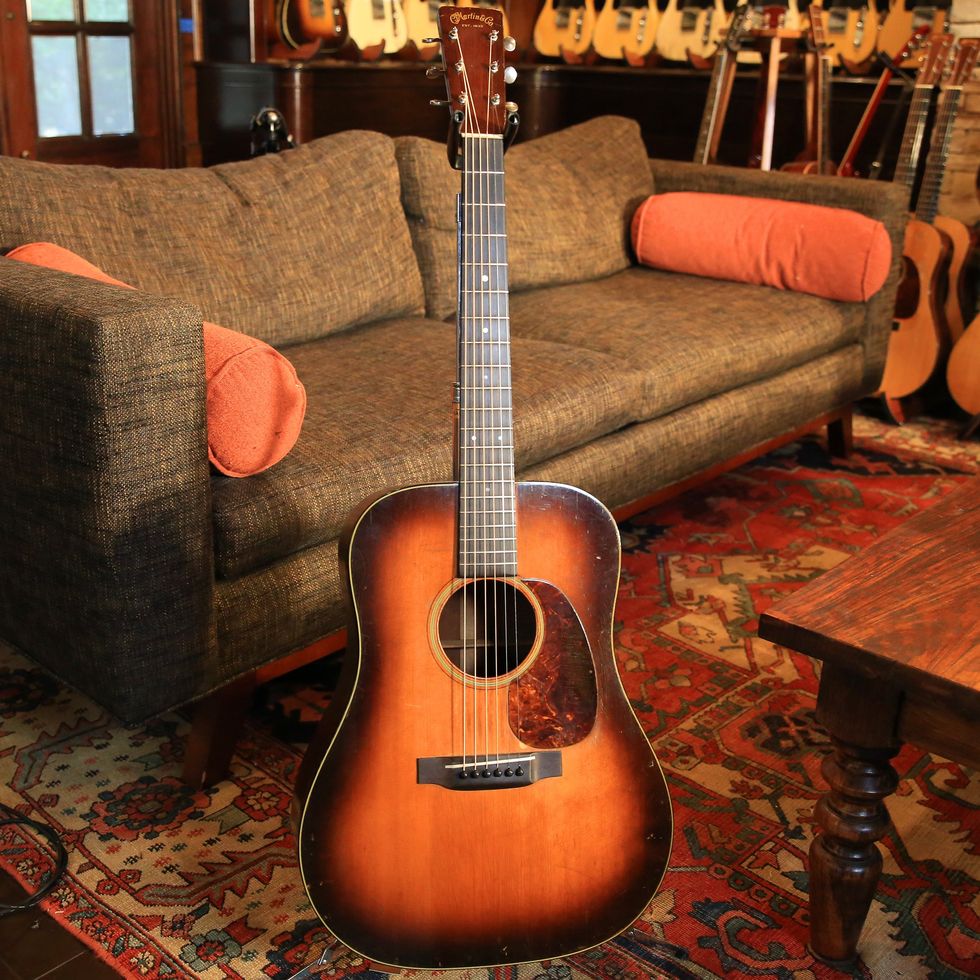
If you can keep your eyes off the wall of Telecasters in the background for a few seconds, you’ll see Vince Gill’s 1939 Martin D-18 Sunburst front and center. The D-18 was manufactured with a spruce top and mahogany back and sides for the first time in 1931, and very few were done in sunburst. Gill strings his acoustics with D’Addario Phosphor Bronzes, .012—.053.
More Martin Madness
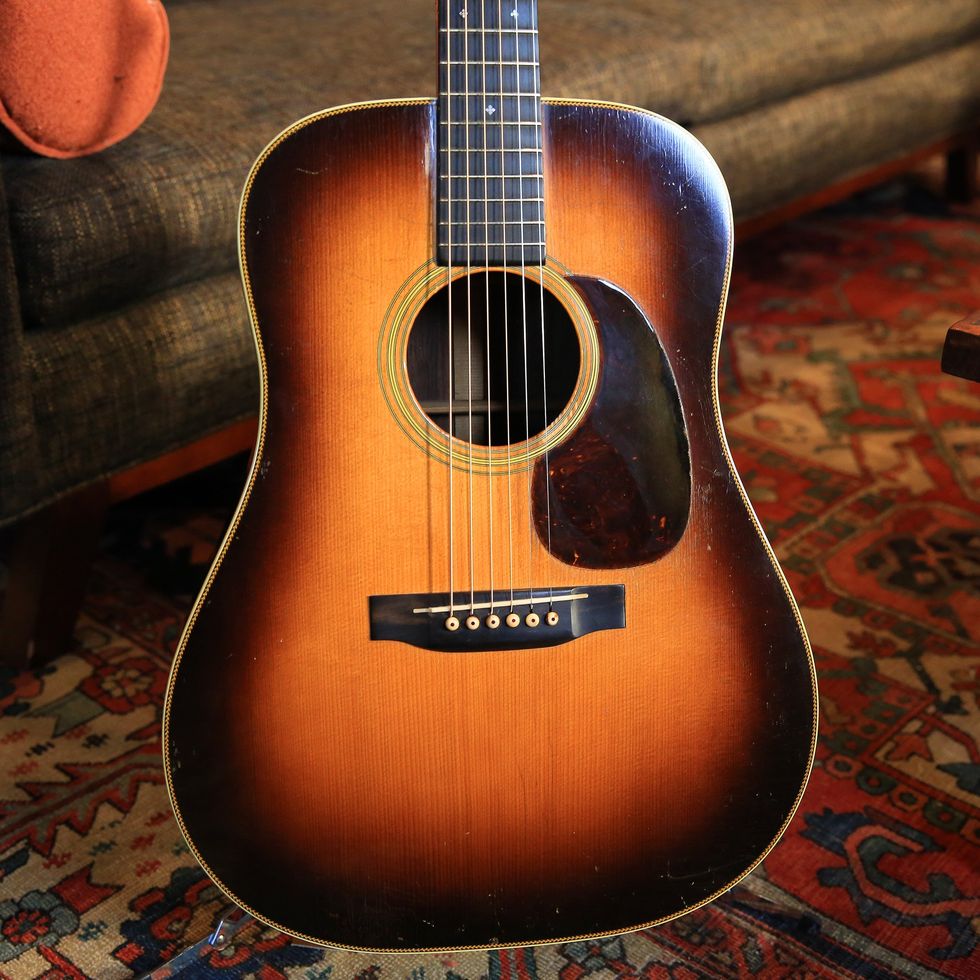
Now, here’s an ultra-rare 1935 Martin D-28 with herringbone binding, even rarer for its sunburst finish.
Well Played, My Friend
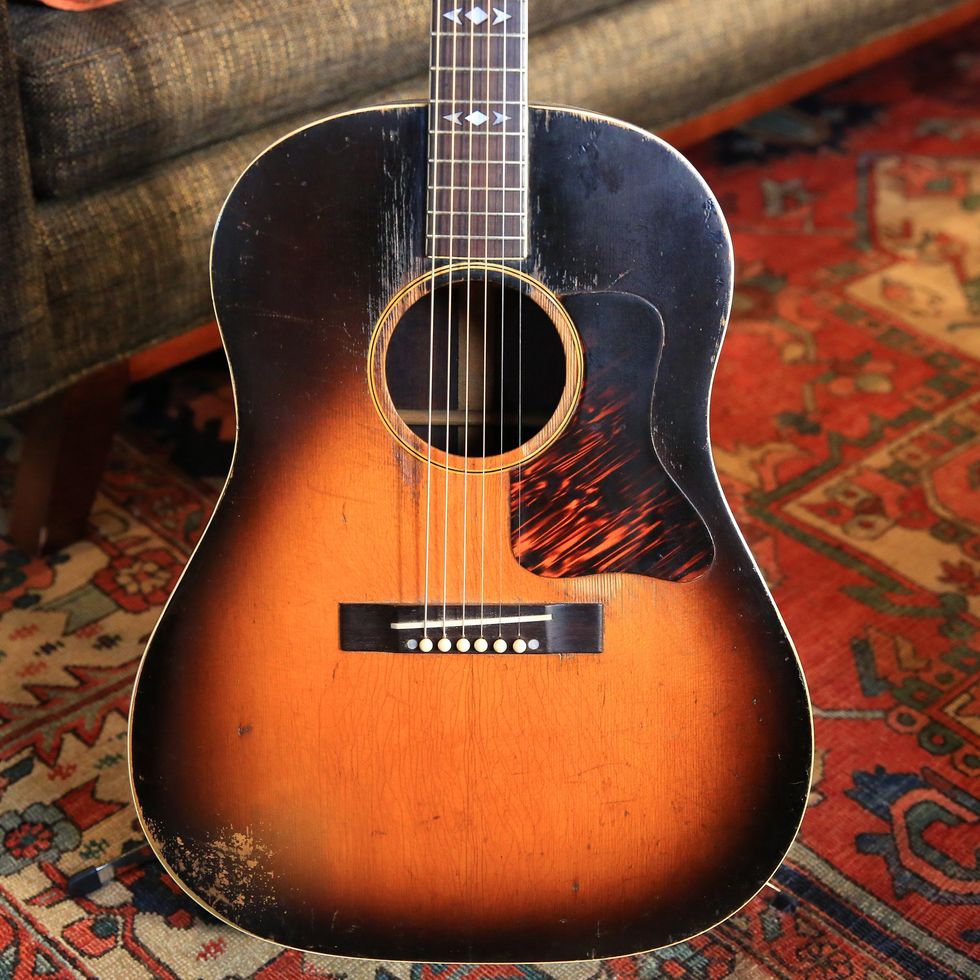
With those marks, I’d call this a beater—if it wasn’t a 1937-’38 Gibson Advanced Jumbo sunburst. This round-shoulder model features a rosewood back and sides, ornate diamond and arrowhead fretboard inlays, and binding on the top, back, and fretboard. Wow!
One More Martin
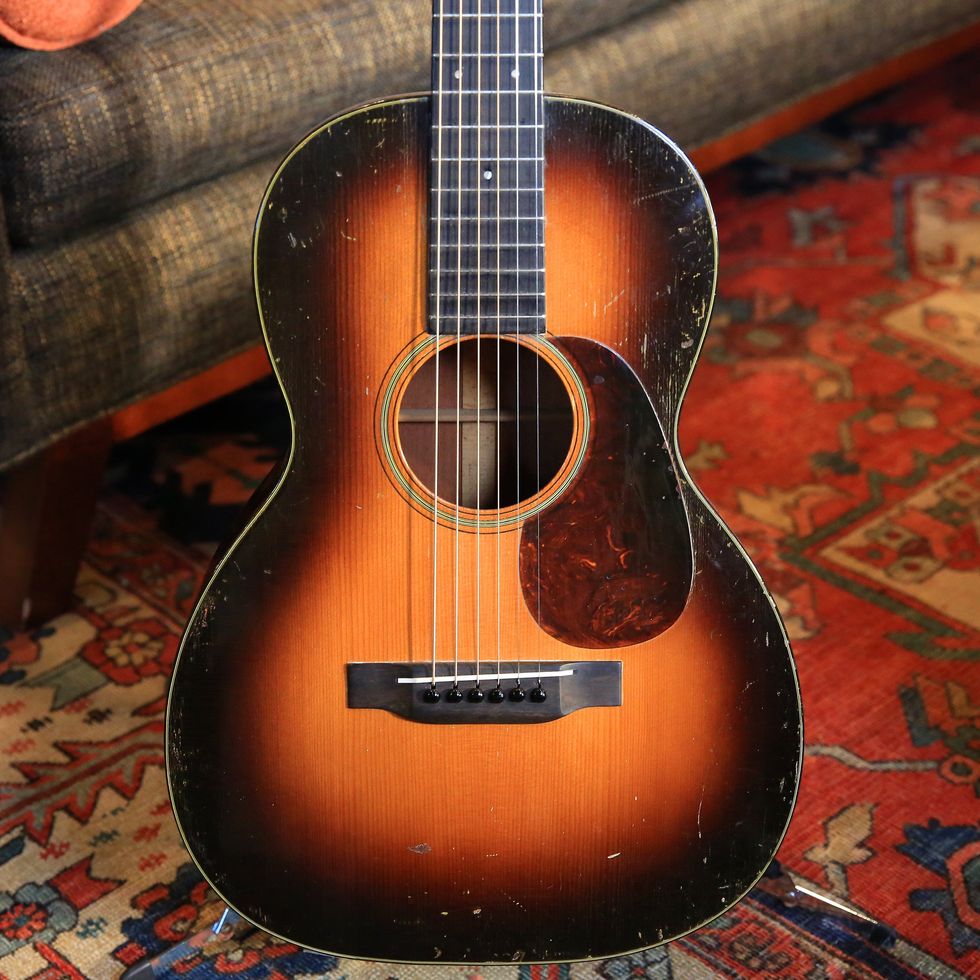
This 1930s Martin 00-18 in sunburst features an Adirondack spruce top, Honduran mahogany sides and neck, and an ebony fingerboard and bridge. Yes, you want this one, too!
Paul's Big Ride
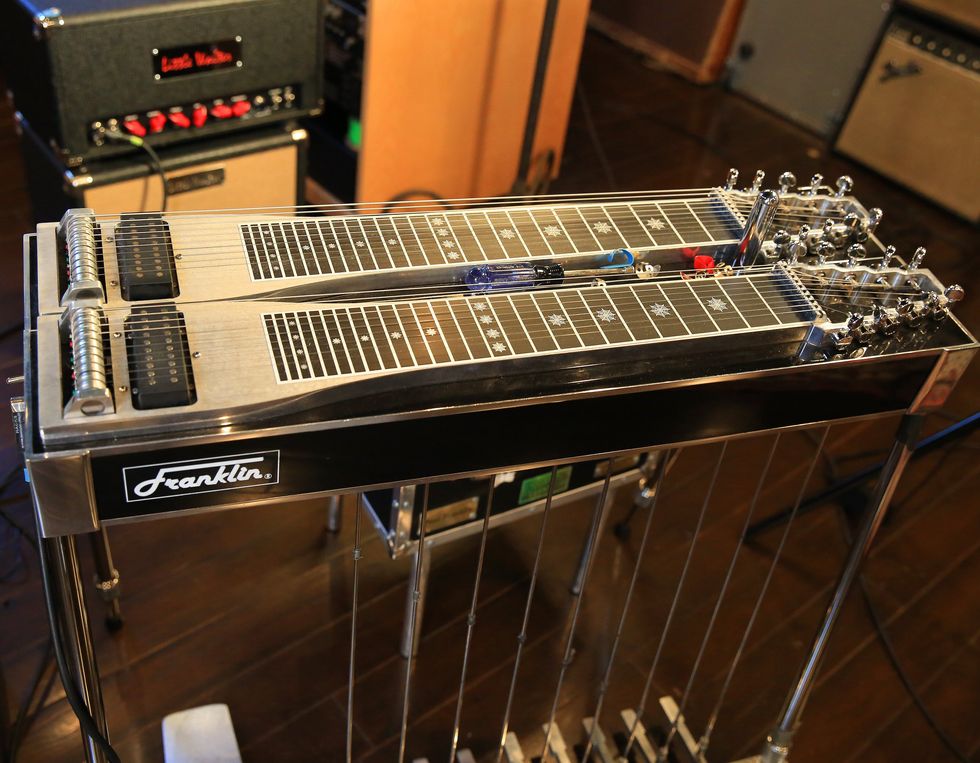
Paul Franklin’s father has been building steel guitars for him—and a lot of other artists—since Paul was a kid. All in, Franklin has 11 Franklin Pedal Steel Guitars. For this Rundown, he plays his double neck in C6 and E9 tunings, strung with D’Addario NYXL .010 sets.
Two Names, Four 6L6s
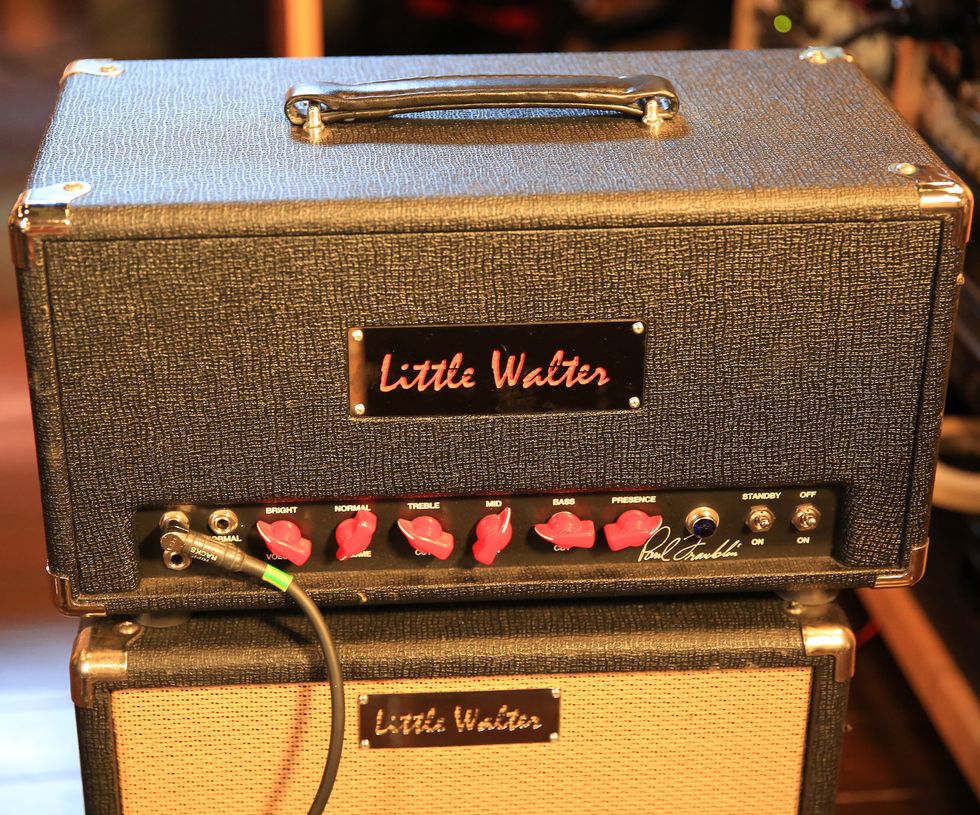
Paul Franklin plays a Little Walter Paul Franklin Signature ’89 amp. This super-clean 100-watt killer is loaded with four 6L6 tubes and runs a Little Walter 1x12 cabinet.
Sound Station
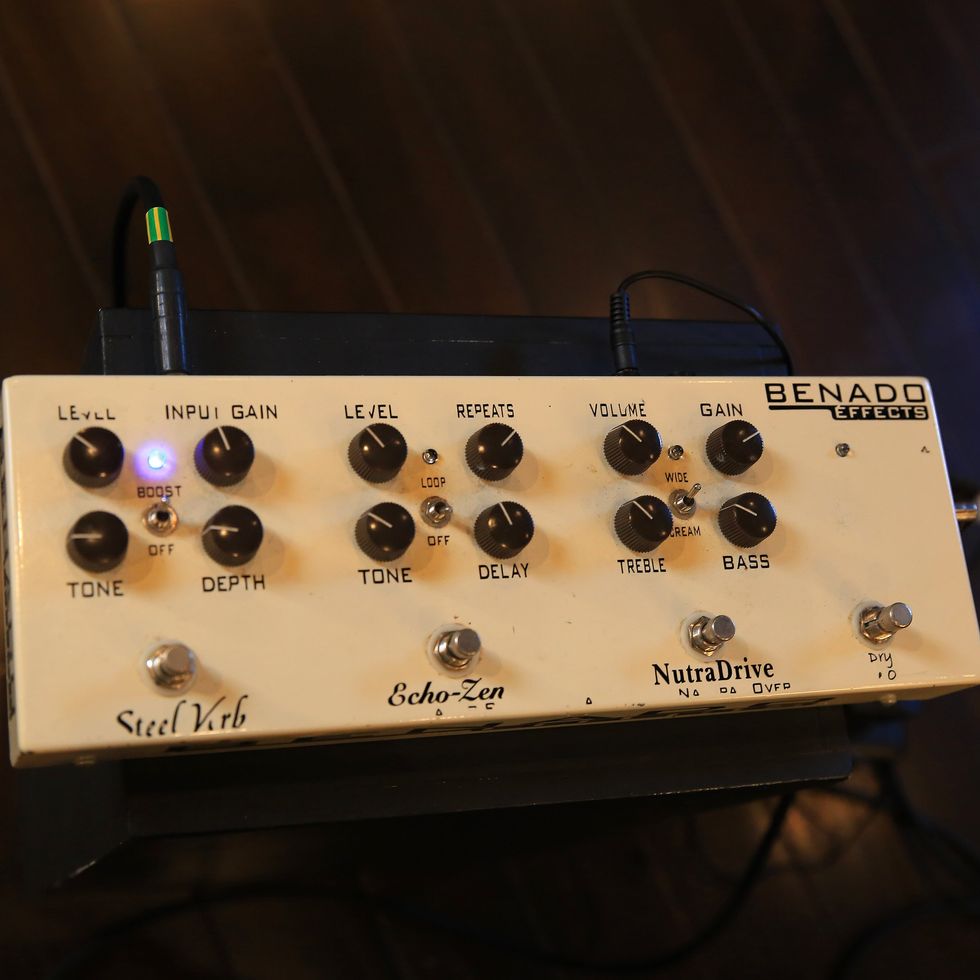
Although Franklin collects pedals, his philosophy is to start with a great organic tone and go from there. Where he goes is typically to his all-analog Benado Effects Steel Dream Signature stompbox for reverb, delay, and drive, as needed. Bad news—this device is sold out, according to the Benado website.
Vince Gill & Paul Franklin's Gear
- Franklin double-neck pedal steel
- Little Walter Paul Franklin Signature Tube Amp
- Benado Effects Steel Dream
- 1930s Gibson AJ
- 1930s Martin D-18
- 1940s Martin D-28
- 1930s Martin 000-18
- 1950s Telecaster
- 1940s D-45
![Rig Rundown: Vince Gill & Paul Franklin [2023]](https://www.premierguitar.com/media-library/rig-rundown-vince-gill-paul-franklin-2023.jpg?id=34797562&width=1200&height=675)

![Rig Rundown: AFI [2025]](https://www.premierguitar.com/media-library/youtube.jpg?id=62064741&width=1245&height=700&quality=70&coordinates=0%2C0%2C0%2C0)


![Devon Eisenbarger [Katy Perry] Rig Rundown](https://www.premierguitar.com/media-library/youtube.jpg?id=61774583&width=1245&height=700&quality=70&coordinates=0%2C0%2C0%2C0)























































